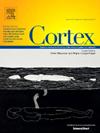Clinical and metabolic profiles in behavioural frontotemporal dementia: Impact of age at onset
IF 3.3
2区 心理学
Q1 BEHAVIORAL SCIENCES
引用次数: 0
Abstract
Aim
Frontotemporal dementia (FTD) is a heterogeneous neurodegenerative disorder, with considerable variability of age-at-onset. We explored clinical and metabolic differences between early- and late-onset behavioural FTD (bvFTD), assuming that they might represent different disease phenotypes.
Materials and methods
We retrospectively studied consecutive patients diagnosed with prodromal or overt bvFTD with [18F]FDG PET scan, neuropsychological assessment (NPS), and Neuropsychiatric Inventory (NPI) available at baseline. Patients were divided into three groups based on age-at-onset: early onset-bvFTD (EO-bvFTD, age<70), late onset-bvFTD (LO-bvFTD, age 70–75) and very late onset-bvFTD (vLO-bvFTD, age>75). NPS and NPI were compared between groups and in the subset of prodromal patients, to study different syndromic phenotypes. Voxel-based analysis compared brain [18F]FDG PET of EO-bvFTD, LO-bvFTD and vLO-bvFTD independently, with respect to healthy controls, to explore metabolic differences. An inter-regional metabolic covariance analysis was performed in frontal lobe subregions, to explore differences in brain connectivity. Moreover, we supported our result using a correlation-based approach on clinical and metabolic variables.
Results
101 bvFTD (62 prodromal bvFTD) were enrolled (EO-bvFTD: n = 36, prodromal n = 21; LO-bvFTD: n = 36, prodromal: n = 22; vLO-bvFTD: n = 29, prodromal: n = 19). Greater verbal memory deficit was evident in LO-bvFTD and vLO-bvFTD compared to EO-bvFTD (immediate recall: p = .018; p = .024; delayed recall: both p = .001, respectively), with similar results in the subset of prodromal patients. EO-bvFTD and LO-bvFTD had a higher behavioural severity than vLO-bvFTD. LO-bvFTD and vLO-bvFTD showed more widespread relative hypometabolism, with a greater involvement of posterior, subcortical and temporo-limbic regions compared with EO-bvFTD. Moreover, vLO-bvFTD showed a different pattern of intrafrontal metabolic covariance compared to EO-bvFTD and LO-bvFTD.
Discussion
The cognitive–behavioural profile of bvFTD differs between early- and late-onset, already from the prodromal stage of the disease. Both metabolic pattern and functional connectivity vary based on age-at-onset. Understanding these differences could contribute to improve diagnostic accuracy and understanding the underling pathological heterogeneity.
行为性额颞叶痴呆的临床和代谢特征:发病年龄的影响
额颞叶痴呆(FTD)是一种异质性神经退行性疾病,具有相当大的发病年龄变异性。我们探讨了早发性和晚发性行为性FTD (bvFTD)之间的临床和代谢差异,假设它们可能代表不同的疾病表型。材料和方法我们回顾性研究了连续诊断为前驱或显性bvFTD的患者,这些患者在基线时使用FDG PET扫描、神经心理评估(NPS)和神经精神量表(NPI)。患者根据发病年龄分为三组:早发性bvftd (EO-bvFTD,年龄70岁)、晚发性bvftd (LO-bvFTD,年龄70 - 75岁)和极晚发性bvftd (vLO-bvFTD,年龄75岁)。比较两组间及前驱患者亚群的NPS和NPI,研究不同的综合征表型。基于体素的分析比较了EO-bvFTD、LO-bvFTD和vLO-bvFTD的脑[18F]FDG PET与健康对照组的差异,以探讨代谢差异。在额叶亚区进行了区域间代谢协方差分析,以探索大脑连通性的差异。此外,我们使用基于临床和代谢变量的相关性方法来支持我们的结果。结果共纳入bvFTD 101例(前驱型bvFTD 62例),其中e0 -bvFTD 36例,前驱型21例;LO-bvFTD: n = 36,前驱:n = 22;vLO-bvFTD: n = 29,前驱:n = 19)。与EO-bvFTD相比,LO-bvFTD和vLO-bvFTD的言语记忆缺陷明显更大(即时回忆:p = 0.018;p = 0.024;延迟回忆:两者的p值分别为0.001),在前驱患者亚群中也有类似的结果。EO-bvFTD和LO-bvFTD的行为严重程度高于vLO-bvFTD。与o- bvftd相比,LO-bvFTD和vLO-bvFTD表现出更广泛的相对低代谢,其后部、皮质下和颞边缘区域的受累程度更高。此外,与EO-bvFTD和LO-bvFTD相比,vLO-bvFTD表现出不同的额内代谢协方差模式。bvFTD的认知-行为特征在早发和晚发之间有所不同,已经从疾病的前驱阶段开始。代谢模式和功能连接都因发病年龄而异。了解这些差异有助于提高诊断的准确性和理解潜在的病理异质性。
本文章由计算机程序翻译,如有差异,请以英文原文为准。
求助全文
约1分钟内获得全文
求助全文
来源期刊

Cortex
医学-行为科学
CiteScore
7.00
自引率
5.60%
发文量
250
审稿时长
74 days
期刊介绍:
CORTEX is an international journal devoted to the study of cognition and of the relationship between the nervous system and mental processes, particularly as these are reflected in the behaviour of patients with acquired brain lesions, normal volunteers, children with typical and atypical development, and in the activation of brain regions and systems as recorded by functional neuroimaging techniques. It was founded in 1964 by Ennio De Renzi.
 求助内容:
求助内容: 应助结果提醒方式:
应助结果提醒方式:


